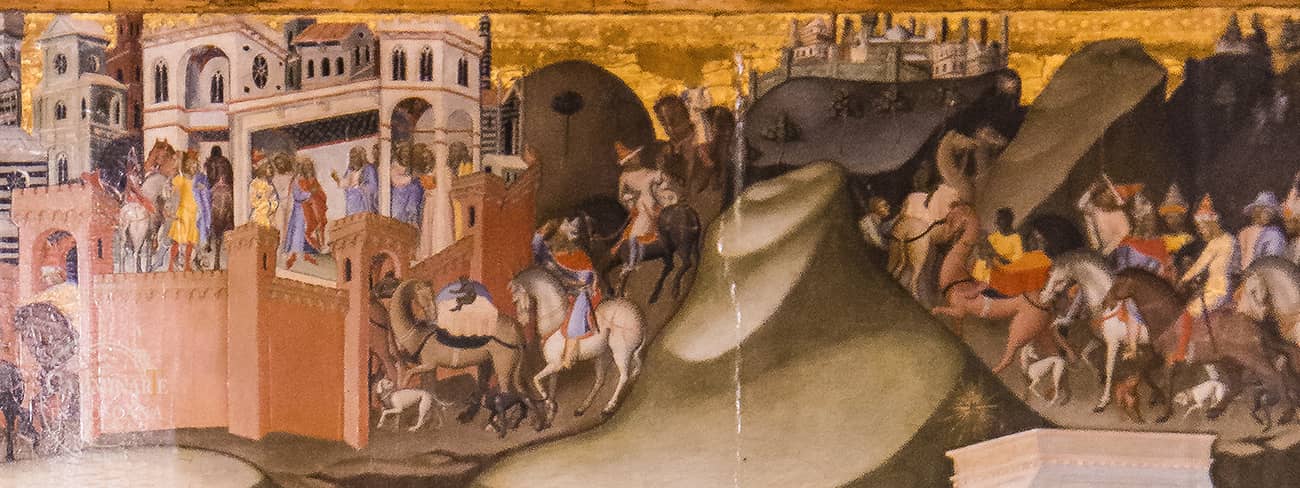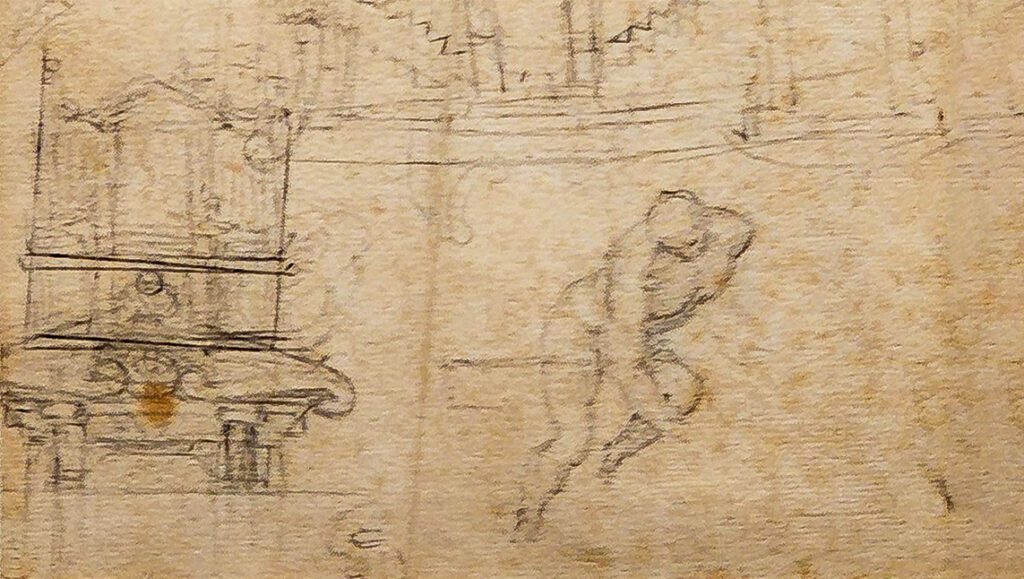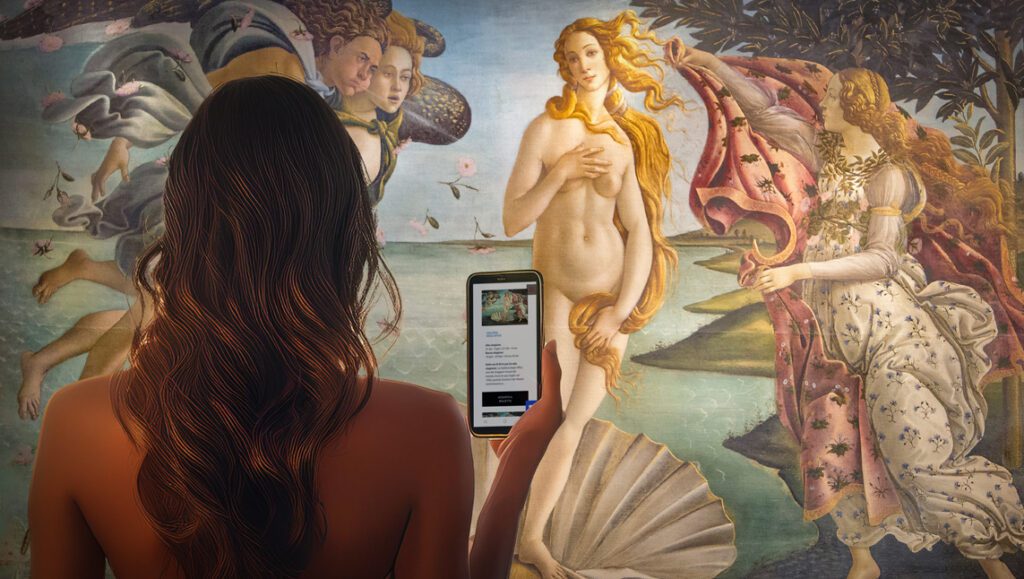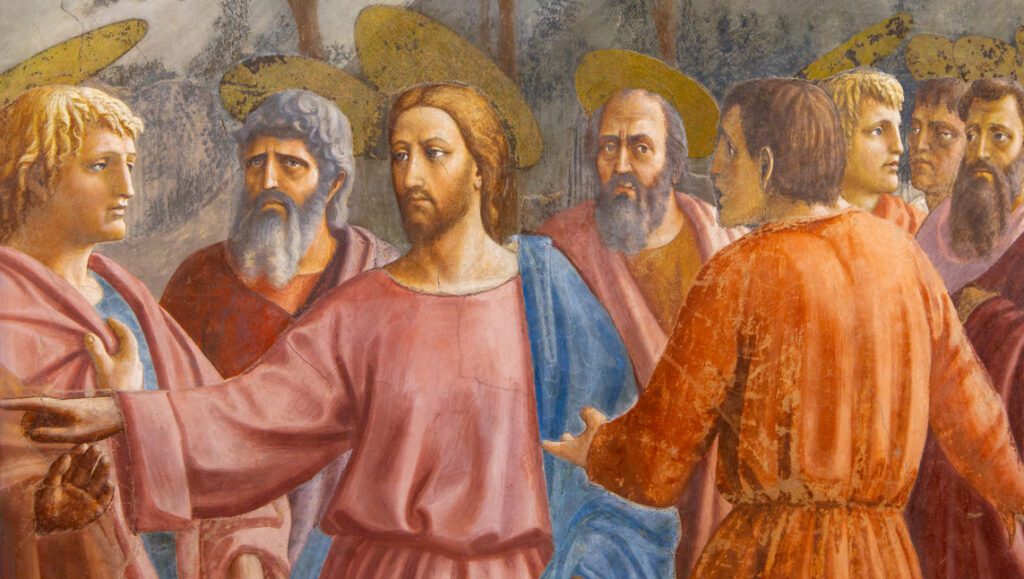
A Siena Pinacoteca’s masterpiece
The Adoration of the Magi is one of Bartolo di Fredi’s works that can be seen in the Pinacoteca nazionale of Siena (National Art Gallery). The painting is unanimously considered the masterpiece of Bartolo di Fredi, one of the most prolific Sienese painters in Siena in the second half of the fourteenth century. The Adoration of the Magi of the Pinacoteca is a tempera on wood and is divided into two highly suggestive narrative registers: in the foreground we have the procession of the Magi who adores the child, while in the background we have the stories of the arrival of the procession.
A work of daily realism
If the Pinacoteca di Siena stands out for its large series of fourteenth-century paintings, the Adoration of the Magi by Bartolo di Fredi is undoubtedly one of those works that is characterised by having some elements of a daily realism: for example, you can see as, while the Magi prostrate themselves to adore the child, Saint Joseph finds ends-up forced to bear the gift brought by one of the kings. In front of the latter, the crown is placed on the ground as a symbol of the homage of the powerful of the earth.
To characterise the figures of the procession of this Adoration of the Magi is the exotic style of the robes. Of no less importance are some details such as the pointed hats kept by the pages – a reference to the oriental origin of the kings – or the caricatural expressions of some characters, such as the stable boy who, while gritting his teeth, holds a very agitated horse by the bridle.

Adoration of the Magi, Bartolo di Fredi 1367 ca, Pinacoteca di Siena
Fight between good and evil
In the Adoration of the Magi of the Pinacoteca there are also symbolic elements, such as the dog near one of the pile-drivers; with an impassive attitude, the animal remains crouched without the slightest fear of being trampled by the imposing horse by its side. It is possible to see in these figures a symbolic reference to the struggle between good and evil: the dog is in fact usually associated with loyalty, just as the horse is almost always a symbol of lust. The agitation of the horse can therefore be interpreted as the disapproval of the evil one for the birth of the Savour, the one who will save humanity from sin and who now reveals himself in his divinity (the word “Epiphany” in Greek means precisely “manifestation”) . Behind the group of the Virgin with St. Joseph, there is a newsstand which, a newsstand acts as a canopy for the Holy Family.
This structure remembers, vaguely in form, that in Duccio’s Annunciation of the Maestà (in this day at the National Gallery in London).
The background scenes
In the upper part of the painting by Bartolo di Fredi, we find two scenes represented: on the left we see the entrance of the Magi to Jerusalem – where they are received by Herod –, while the scene on the right describes what happens after the adoration of the child. According to what is told in the Matthew’s Gospel, warned by an angel on Herod’s bad intentions, the Magi returned to their original countries, avoiding passing by the Herod’s castle, guided by the star that had already guided them to the Christ child .
The Jerusalem represented by the painter recalls contemporary Siena contemporary to him: evoking the views of Siena in the Good Government of Lorenzetti, the city of Bartolo di Fredi is surrounded by brick walls and dotted with tall buildings among which the unmistakable profile emerges of the Duomo with its ‘zebra’ walls.
According to some scholars such as Moran and Freuler, this Adoration of the Magi, once included in a larger polyptych, was made for a chapel in the Cathedral of Siena, however the exact origin of the painting is unknown, although some fragments of the predella with Dominican subjects would suggest a commission from the friar order.
Although the doubts remain, the hypothesis that the Sienese painter made it for the Basilica of San Domenico in Siena seems to be confirmed, since Bartolo di Fredi is documented for the execution of an altarpiece for the representation of the Trinity. The contacts between the painter and the Dominican order must have been important if in 1410, when the painter died, he was buried in the cloister of the Sienese convent ⟢



